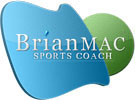

How to Treat a Sports-Related Concussion
Barry Wilkes provides an overview of the treatment process for head injuries.
A concussion is a severe injury that sportspeople, coaches, and trainers must be aware of to ensure no risk to the player's career and well-being. Any athlete who suffers a head injury must stop any activity indulging in and retire from play for the day. Otherwise, they risk brain damage by returning to full training before the brain can recover and return to normal functioning. Most concussions are resolved quickly, around a week to ten days. The period may, however, be more prolonged for adolescents and children. The brain is susceptible and more vulnerable to damage at this time, so a medical professional must decide the date of return to play.
How the Severity of a Concussion is Determined
It changes from case to case, but the common factors all doctors look for are immediate symptoms, medical history, previous concussions, use of medicines, ability to keep balance, pay attention, remember, and learn things, etc. Based on these, the type of sport, and the player's position, they can decide when he should return. You can use medicine to reduce the symptoms, but that is not analogous to healing the concussion. The athlete must also go off medication and see how they can function to check if they are fit again.
The Treatment Process
The most important thing about healing a concussion is rest and respite from mental and physical exertion.
- No activity, complete rest.
- Indulging in a light aerobic activity like walking, mild exercise, and swimming. You must ensure the heart rate is less than 70% of the maximum at each step.
- Exercise related to the sport, ranging from skating and running drills to stretching and swimming. No head impact must be ensured.
- Non-contact drills and training. Light resistance training can also be included, and the athlete can move on to more complex training like passing.
- Full-contact practice: After the doctor has agreed that the athlete is indeed fully healed, the athlete can return to full-scale training with the rest of the team, if any.
- The final step is returning to play after a few successful training sessions.
The athlete must have at least 24 hours of symptom-free time at every level before moving to the next step. If there is any regression, they must prolong the current stage. The recovery time will be longer for subsequent concussions, which is why you must be transparent about your medical history with your doctor.
Conclusion
The irritation of being bedridden and the charm of returning is not lost on anyone, but this is extremely dangerous and must be avoided. A second injury within a few days could have serious repercussions ranging from prolonged symptoms to long-term brain disorders and even death due to severe brain swelling. A medical professional must always approve your return.
Page Reference
If you quote information from this page in your work, then the reference for this page is:
- WILKES, B. (2017) How to Treat a Sports Related Concussion [WWW] Available from: https://www.brianmac.co.uk/articles/article246.htm [Accessed
About the Author
Barry Wilkes is a sports trainer who has been a professional sportsman and coach for over thirty years. He has taken to blogging to help players and coaches understand the process of intensive training, return to play, concussion treatment, and more.